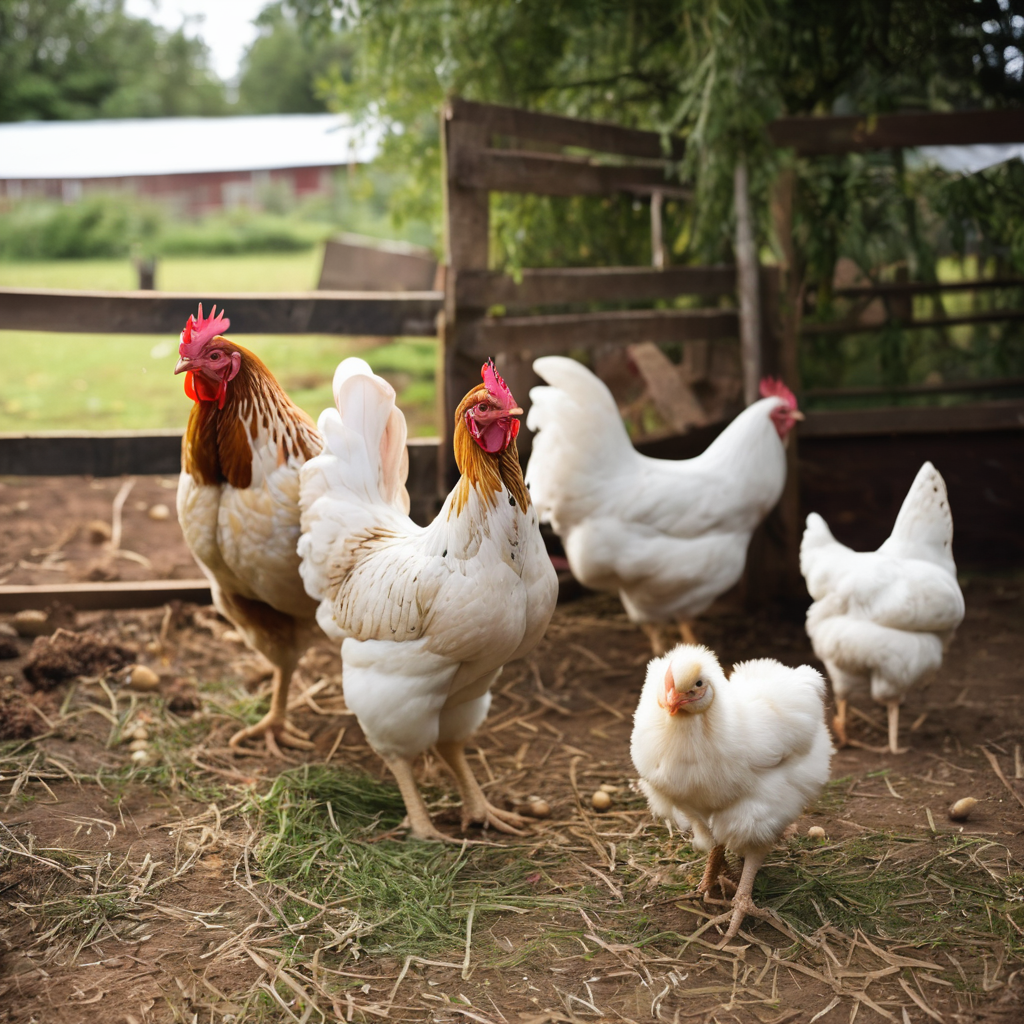When it comes to feeding your chickens, it’s always best if you can provide some homegrown options. Not only does this cut down on feed costs, but it also gives your girls some variety in their diet. The good news is that there are plenty of easy plants you can grow to supplement your chickens’ meals.
In this article, I’ll share 10 plant options that are virtually foolproof for any homesteader to cultivate as chicken food.
Easy Plants You Can Grow As Chicken Food
One of the simplest plants to start with is wheat. Wheat is high in protein and nutrients that chickens love to peck at. All you need to do is broadcast wheat seed directly onto your garden soil in the fall. The cold weather will vernalize the seed, triggering germination in early spring when temperatures warm up again.
By summer, you’ll have an entire patch of wheat for your chickens to forage. I like to grow a small plot each year and allow my chickens to free-range, gleaning what grains they want to eat.
Another easy grain is oats. Oats have a similar growth process to wheat in that they’re a winter crop planted in the fall. Oats sprout in early spring and will be ready for harvest by late June or early July.
Oats provide carbohydrates and are very filling for chickens. I let a section of my oat patch fully mature so I could harvest the grains for my own baking. But I also allow my chickens access to glean immature oats, which they seem to prefer.
For a quick-growing green, consider planting millet. Millet has tiny seeds that mature incredibly fast, often within 6–8 weeks of planting. This makes it a great option for multiple plantings throughout the summer.
Chickens find millet seeds very tasty, and it’s an energy-rich treat for them. I direct sow millet all around the edges of my chicken yard and allow my girls to forage it down throughout the season.
If you want a green pasture your chickens can graze on more, plant a patch of sorghum. Sorghum has tall stalks topped with seed heads and provides foliage right at chicken-height. It grows quickly during the summer months. I like to rotate my chickens through a fenced section of sorghum to allow regrowth and prevent overgrazing. The seeds are also a protein-rich treat once mature.
Speaking of grazing, your chickens will love snacking on the leaves of lettuce and kale. These greens are so easy to grow that even beginning gardeners can succeed.
I direct sow lettuce and kale seeds starting in early spring all the way through late summer. My chickens get free-range access to graze on any leaves they find. The plants re-grow quickly to provide continuous foraging.
Another leafy green option is Swiss chard. Swiss chard is more heat- and cold-tolerant than lettuce, so you can plant an early spring crop and a late summer/fall crop too.
The leaves and leaf stalks are nutritious for chickens. I find Swiss chard is one of the first plants my chickens will eagerly gobble up in the garden each morning.
If you want an edible planting that acts almost like a perennial groundcover, opt for comfrey. Comfrey grows rapidly each season, and chickens enjoy pecking at the leaves.
It’s high in vitamins, minerals, and protein. I direct sow comfrey seeds in the spring and allow them to self-seed each year to spread throughout my chicken yard. It’s low-maintenance while providing constant foraging.
For a high-protein legume option, plant soybeans. Soybeans fix nitrogen in the soil as they grow and provide edible pods and seeds for chickens once they are mature.
They take around 80–90 days from planting seed to harvest. I plant soybeans in a large patch and allow my chickens to free-range, collecting any pods they don’t eat for my own use.
If you want a high-calcium nibble for your laying hens, opt for mustard greens. Mustard greens grow quickly and provide leafy foliage full of calcium, which is important for strong eggshells.
They’re easy to direct sow and provide a tasty snack for chickens. I plant small patches throughout my chicken yard each week for continuous harvest.
Finally, consider planting pumpkins or winter squash. Chickens love pecking at the developing fruits and eating any seeds inside once they are ripe. Pumpkins and squash grow vigorously over the summer on a trailing vine.
I plant them at the edges of my chicken yard and allow my chickens to forage the vines and develop gourds to their heart’s content through the fall.
Final Thoughts
In conclusion, with a little planning, you can grow many easy plants right in your chicken yard to supplement their store-bought feed. The options I outlined above are virtually foolproof to cultivate and provide highly nutritious, protein-rich snacks your chickens will love.
With some rotational plantings, you can provide foraging almost year-round too. I hope these ideas inspire you to try growing some chicken food of your own this season!
